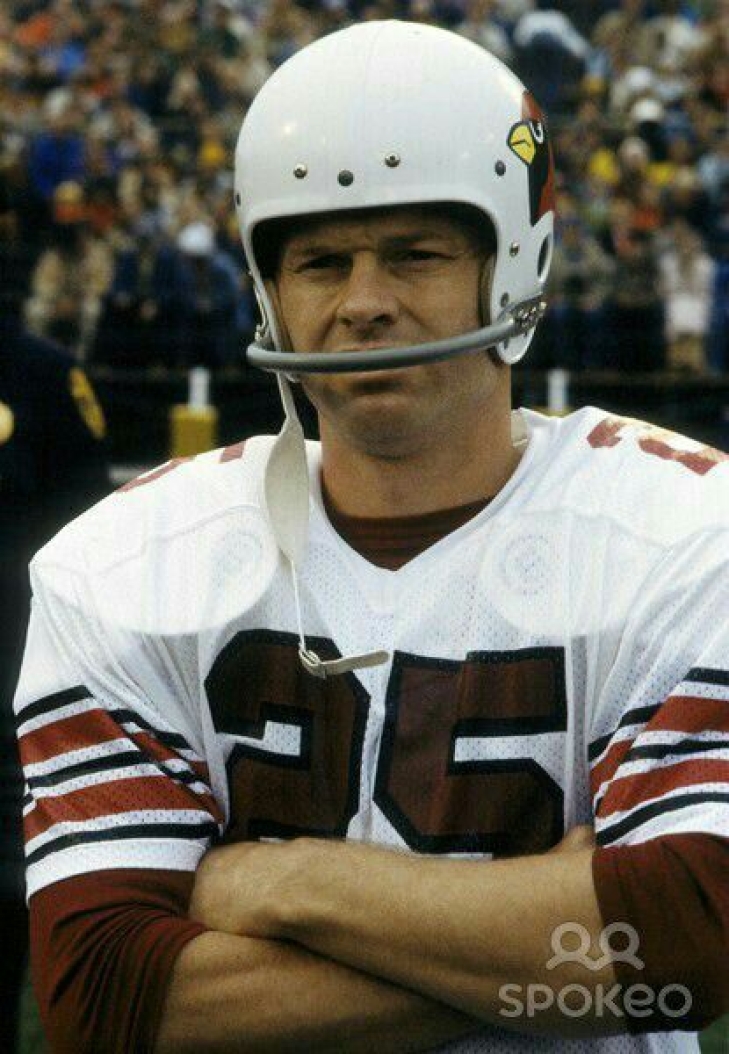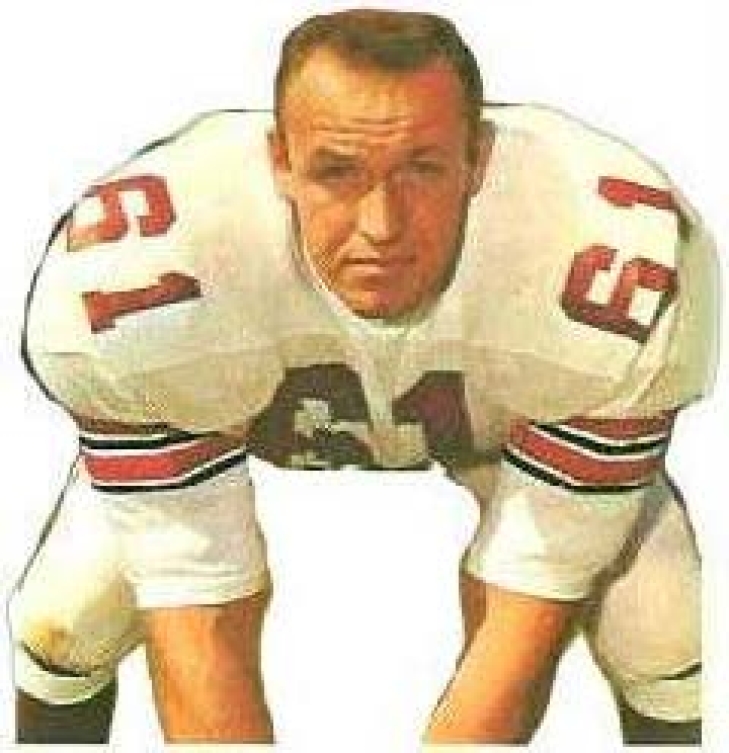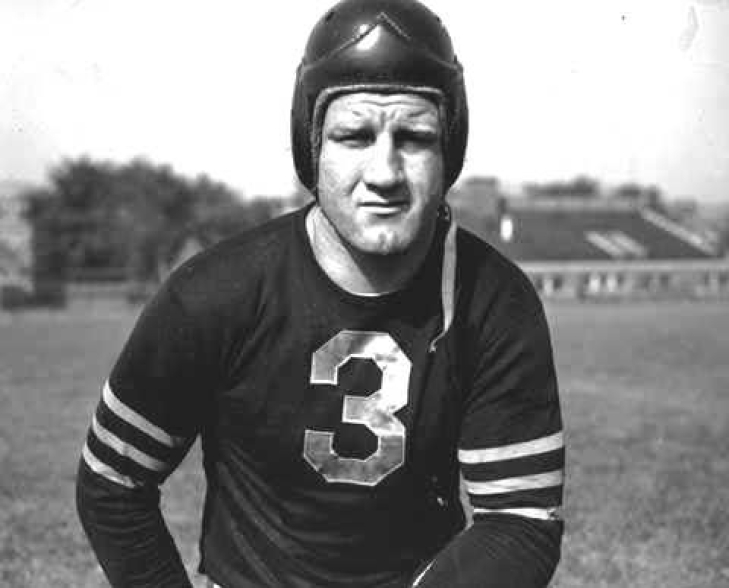
Committee Chairman
27. Jim Bakken
Drafted by the Los Angeles Rams in 1962, Jim Bakken did not make the Rams roster out of training camp but was scooped up by the St. Louis Cardinals, a team he would play 15 years for.
Special Teams advanced considerably during Bakken's time, and he was one of an emerging group of specialty Kickers. Chosen for four Pro Bowls and two First Team All-Pros, Bakken is one of the few players to be selected for two All-Decade Teams (60s and 70s), and at one time was the single-game record holder for Field Goals in a Game (7).
His 1,380 Points is by far the most in franchise history.
26. Bob DeMarco
Bob DeMarco centered the Cardinals throughout the 1960s, debuting in 1961 and becoming a starter the year after. DeMarco was solid throughout the decade, netting three Pro Bowls (1963, 1965 & 1967), with the last of the three also seeing him with a First Team All-Pro.
DeMarco left St. Louis after the 1969 season, playing five more years in the NFL. DeMarco started all but five of his 107 Games with the Cardinals, and the franchise never had to worry about Center for eight strong years.
The Pro Football Hall of Fame Revisited Project: 1949 SEMI-FINAL VOTE
1949 PRELIMINARY RESULTS:
Thank you for all of you who have participated in the Pro Football Hall of Fame Revisited Project, and if you are unaware of what that is, simply, we acted as if the PFHOF had their first class in January of 1946?
We have completed the first two years, where a Preliminary, Semi-Final and Final vote for the 1946 Class, which inducted two full classes
For “1949” a Preliminary Vote with 130 players whose playing career ended by 1943. We are also following the structure in that players have 20 years of eligibility, and if they do not make it into the Hall, they are relegated to the Senior Pool.
Last week, each voter was asked to select 25 names from the preliminary list, with the top 25 vote getters named as Semi-Finalists.
This week, the voters were asked to pick 15 names from the 25 Semi-Finalists, and next week, they will pick five from the remaining 15. We will continue this process weekly until we catch up to the current year.
29 Votes took place
This is for the “Modern Era”
Bold indicates they advanced to the Finals:
|
Player |
Year of Eligibility |
Vote Total |
|
Johnny Blood TB-HB-WB-BB-DB |
6 |
30 |
|
Bronko Nagurski G-LB |
1 |
28 |
|
Lavvie Dilweg E |
10 |
27 |
|
Cliff Battles TB-FB-WB-DB |
7 |
27 |
|
Mike Michalske G-T-LB-BB |
7 |
26 |
|
Link Lyman T |
10 |
25 |
|
Clark Hinkle FB-LB-HB-DB |
3 |
24 |
|
Verne Llewellen B |
12 |
23 |
|
Jimmy Conzelman HB-TB-BB-E |
15 |
21 |
|
Joe Guyon WB-TB-BB-FB |
17 |
21 |
|
Ray Flaherty E-DE |
8 |
21 |
|
Dutch Sternaman HB-QB-FB |
17 |
19 |
|
Danny Fortmann G-LB |
1 |
19 |
|
Tuffy Leemans FB-TB-DB-QB |
1 |
17 |
|
Ox Emerson G-C |
6 |
15 |
|
Walt Kiesling G-T |
6 |
14 |
|
Bill Hewitt E-DE |
1 |
14 |
|
Swede Youngstrom G-T-E-C |
17 |
13 |
|
Steve Owen T-G |
11 |
13 |
|
Red Badgro E-DE |
8 |
11 |
|
Hunk Anderson G-C |
19 |
10 |
|
Cecil Isbell TB-HB |
2 |
10 |
|
Turk Edwards T |
4 |
9 |
|
Cub Buck T |
19 |
8 |
|
Beattie Feathers HB-WB |
4 |
7 |
This is for the “Senior Era”
*Bold indicates they advanced to the Finals:
|
Ted Nesser |
N/A |
23 |
|
Blondy Wallace |
N/A |
19 |
|
Henry McDonald |
N/A |
18 |
|
Sol Butler |
N/A |
17 |
|
Gull Falcon |
N/A |
13 |
Next Saturday, we will be posting the results of the 1949 Class of the Pro Football Hall of Fame Revisited Project.
Thank you to all who contributed, and if you want to be a part of this project, please let us know!
Mathematics and Card Games: The Beauty of Numbers in Play
From ancient civilizations to modern societies, card games have served as both entertainment and a challenge to our cognitive abilities. While the thrill and joy of these games are undeniable, they also unfold a mesmerizing dance of numbers, patterns, and probabilities. For those who stop to observe, card games can be an intuitive lesson in mathematics, offering insights into concepts that, at first glance, seem confined to dusty textbooks.
The Foundations of Probability
The idea of probability is intertwined with the essence of card games. Each draw from a deck, each shuffle, and each hand dealt brings with it a specific mathematical likelihood of occurrence. Understanding these odds can offer players an edge, while also shining a light on the foundational principles of probability theory.
Take, for example, a standard deck of 52 cards. If one were to draw a card at random, the chance of it being an Ace would be 4 out of 52, or roughly 7.7%. But as gameplay progresses and cards are revealed, these probabilities change, offering players dynamic situations to analyze and adapt to.
Elegance in Simplicity: Baccarat's Mathematical Charm
Among the myriad card games that dot the global landscape, baccarat stands out for its elegant simplicity and deep ties to probability. Rooted in its historical origins, the game revolves around achieving a hand total closest to nine. But beneath this straightforward objective lies a realm of mathematical intricacies.
In baccarat, understanding the likelihood of achieving certain hand totals or predicting the banker's or player's success can significantly influence one's approach. This predictive aspect, relying on a mix of intuition and mathematics, is perhaps what makes baccarat so universally appealing. For those looking to delve into the game's digital evolution, platforms offering mobile baccarat serve as an excellent gateway, allowing enthusiasts to explore the beauty of numbers in play, anytime and anywhere.
Strategizing with Combinatorics
Combinatorics, the study of counting and combinations, is another branch of mathematics that card players, knowingly or unknowingly, grapple with. When contemplating how many possible ways a set of cards can be arranged or how many combinations can result in a winning hand, players are diving headfirst into combinatoric calculations.
Poker players, for instance, often calculate the "outs" or specific cards that would enhance their hand. By determining the number of desirable cards left in the unseen deck and weighing that against the total number of unseen cards, players can make more informed decisions about betting, holding, or folding.
Statistics and the Long Game
While individual rounds of card games are subject to the whims of chance, long-term gameplay trends can be analyzed using statistics. Skilled players often keep track of their wins, losses, and other game metrics to identify patterns, ascertain strategies, and refine their gameplay. This statistical approach, beyond enhancing one's game, also offers a practical application of data analysis and interpretation, skills highly prized in numerous professional domains.
Game Theory: The Interplay of Decision and Outcome
Beyond pure mathematics, card games also wade into the waters of game theory, which studies strategic interactions among rational decision-makers. Every move in a card game, especially in competitive setups, is not just about the cards in play but also about predicting opponents' reactions and adapting one's strategy accordingly.
In Conclusion
Card games, in their essence, are a celebration of mathematics. They serve as a bridge between abstract numerical concepts and tangible real-world applications. Whether it's the dynamic probabilities of poker, the combinatoric challenges of rummy, or the elegant predictability in baccarat, these games invite players to not just engage with numbers but to appreciate their profound beauty. In an age where the digital realm offers platforms like mobile baccarat, the confluence of tradition, strategy, and mathematics has never been more accessible, ensuring that the beauty of numbers in play continues to enthral generations.





